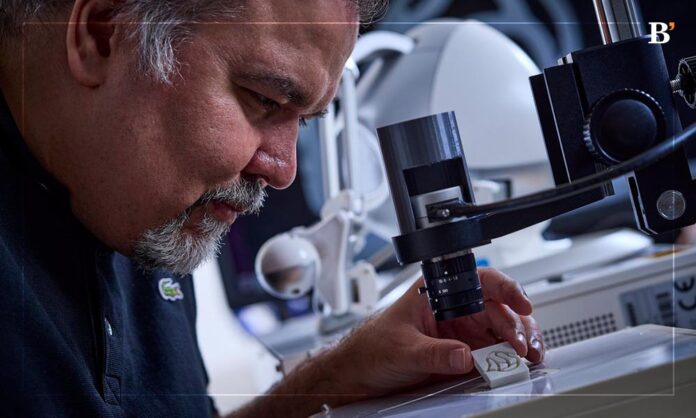Key Highlights
- Researchers at Cornell University have installed electronic brains on solar-powered microrobots.
- They are 100 to 250 micrometers in size, smaller than an ant’s head, so they can walk autonomously without being externally controlled.
While Cornell researchers and others have developed microscopic machines previously that can crawl, swim, walk and fold themselves up, there were always “strings” attached; to generate motion, wires were used to provide electrical current, or laser beams had to be concentrated directly onto specific locations on the microrobots.
The innovation sets the stage for a new generation of microscopic devices that can track bacteria, destroy pollutants, sniff out chemicals, conduct microsurgery, and scrub the plaque out of arteries.
The project brought researchers together from the labs of Cohen, Alyosha Molnar, associate professor of electrical and computer engineering, and Paul McEuen, professor of physical science, all co-senior authors on the paper. The lead author is Michael Reynolds, a postdoctoral researcher.
The new microrobots are approximately 10,000 times smaller than macroscale robots that feature onboard CMOS electronics and can walk faster than 10 micrometers per second.
The fabrication process that Reynolds designed, basically customizing foundry-built electronics, has resulted in a platform enabling other researchers to outfit microscopic robots with their apps, from chemical detectors to photovoltaic eyes that guide robots navigate by sensing changes in light.
Reynolds said that what this lets you imagine is really complicated, highly functional microrobots that have a high degree of programmability, integrated with not only actuators, but also sensors. They are excited about the applications in medicine, something that could move around in tissue and identify good cells and kill bad cells and in environmental remediation, like if you own a robot that knew how to break down pollutants or sense a hazardous chemical and get rid of it.
For more updates on robotics industry, Click here




